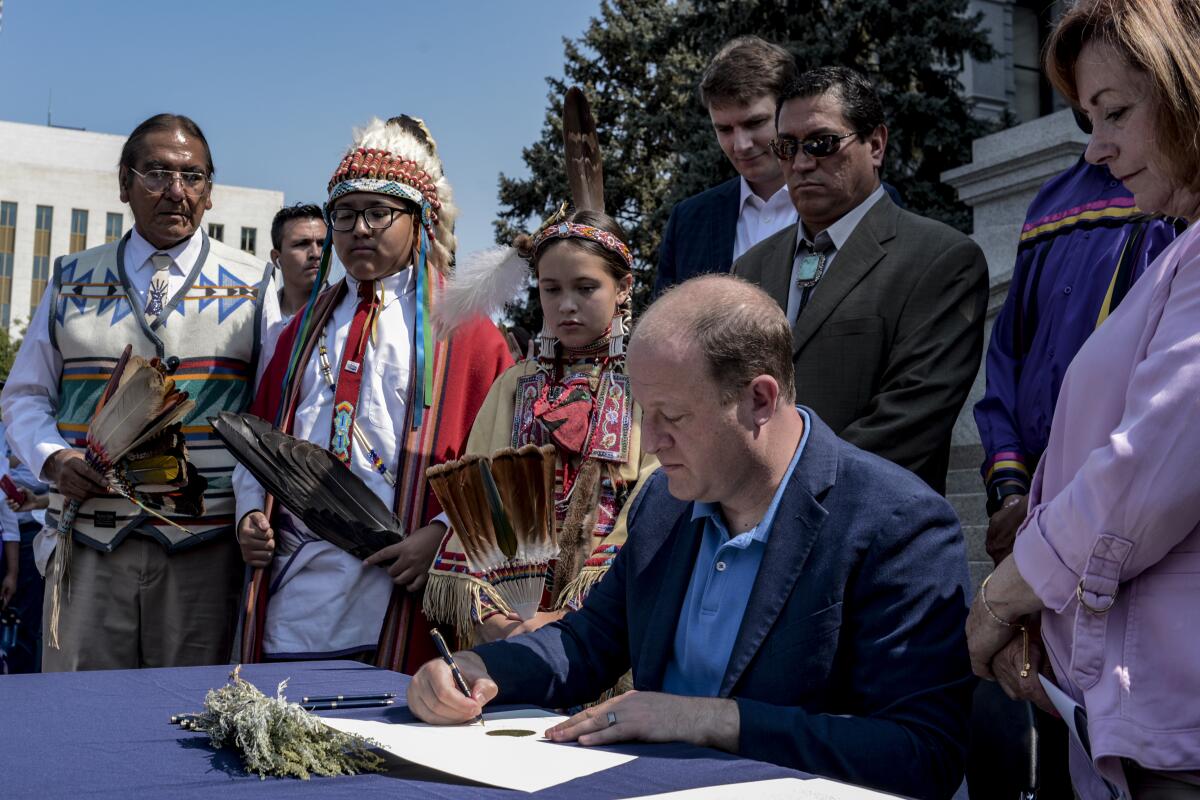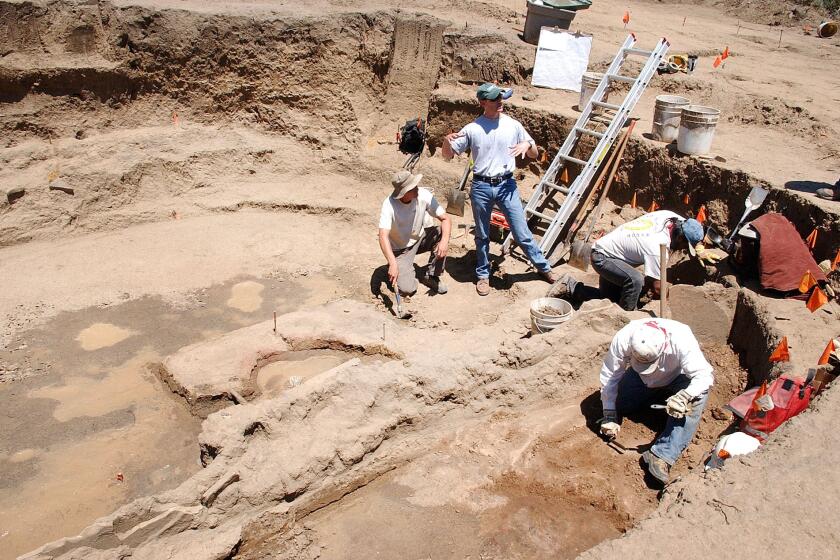Colorado governor voids an 1864 order to kill Native Americans

- Share via
DENVER — Colorado Gov. Jared Polis on Tuesday rescinded a 19th century proclamation that called for citizens to kill Native Americans and take their property, in a move to atone for what he called “sins of the past.”
The 1864 order by Colorado’s second territorial governor, John Evans, eventually led to the Sand Creek massacre, one of Colorado’s darkest and most fraught historic moments. The brutal assault left more than 200 Arapaho and Cheyenne people — mostly women, children and older people — dead.
Evans’ proclamation was never lawful because it contravened established treaty rights and federal law regarding Native Americans, Polis said at the signing of his executive order on the Capitol steps.
“It also directly contradicted the Colorado Constitution, the United States Constitution and Colorado criminal codes at the time,” the Democratic governor said to whoops from the crowd.
Polis stood alongside citizens of the Southern Ute, Ute Mountain, Cheyenne and Arapaho tribes, many dressed in traditional regalia. Some held signs saying, “Recognize Indigenous knowledge, people, land” and “Decolonize to survive.”
Ernest House Jr., who served as executive director of the Colorado Commission of Indian Affairs under former Gov. John Hickenlooper, said Polis’ order is important for the state’s government-to-government relations with tribes, the acknowledgment of history and a move toward reconciliation.
Native Americans often live far from healthcare facilities and distrust federal authorities. Still, they’re getting vaccinated against COVID-19.
“It gives us a place that we were important and that our lives were important,” said House, a citizen of the Ute Mountain Ute Tribe.
A broader push for reconciliation and racial reckoning has occurred across the U.S. after the death of George Floyd, a Black man, at the hands of a white police officer in Minneapolis last year. The movement has included efforts to remove Confederate monuments and statues of slave traders, colonizers, conquerors and others. Some states, including Colorado, have banned Native American mascots in schools.
That movement, coupled with renewed attention to Evans’ history, also prompted Polis to create an advisory board to recommend name changes for the highest peak in the Front Range of the Rocky Mountains, known as “Mt. Evans.” Discussions are taking place within the Colorado Commission of Indian Affairs to choose “more culturally sensitive names,” said Alston Turtle, a councilman with the Ute Mountain Ute Tribe.
Evans governed the territory of Colorado during three years of the Civil War, from 1862 to 1865. He resigned after the Sand Creek massacre happened under his order.
The process of returning Indigenous remains and cultural items to tribes is often drawn out.
Col. John Chivington led the Nov. 29, 1864, slaughter. He and his soldiers then headed to Denver, where they displayed some of the victims’ remains.
The massacre is one of several long-ago atrocities that many Americans don’t know about, such as the Snake River attack in Oregon in 1887, in which as many as 34 Chinese gold miners were killed. Others occurred within the lifetimes of many Americans living today, such as the 1985 bombing by Philadelphia police of the house that headquartered the Black organization MOVE, killing 11 people.
Rick Williams, a Lakota and Cheyenne descendant who studies Native American history, found the original Evans order while researching the aftermath of the Ft. Wise Treaty of 1861, in which U.S. government representatives met with Cheyenne and Arapaho leaders to establish a reservation along the Arkansas River in eastern Colorado. Williams said only 10 people signed the agreement.
“The next two years, it was hell for Indians because they didn’t sign the treaty, and they tried to kill as many of them as they could. And when that didn’t work, [Evans] issued an order to declare war,” Williams said.
One of Evans’ orders deemed Native Americans “enemies of the state,” and the second called for Colorado citizens to kill and steal from them, Williams said.
More to Read
Sign up for Essential California
The most important California stories and recommendations in your inbox every morning.
You may occasionally receive promotional content from the Los Angeles Times.












